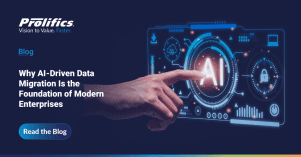Written by Rajeev Sharma, Senior Architect, Digital Experience and Intelligent Automation, Prolifics
The Rise of LLM APIs
The rise of Large Language Model (LLM) APIs has opened exciting possibilities for natural language processing. Leveraging pre-trained LLMs allows developers to perform a wide range of language-related tasks with ease.
However, integrating these APIs into real-world applications brings unique challenges. This guide is for developers and architects who plan to integrate LLM APIs and build scalable, efficient, and secure AI applications.
Proper planning and architectural decisions are essential to ensure success. Let’s explore the key challenges and how to overcome them.
1. Choosing the Right LLM API
Selecting the right LLM API can be complex. With multiple providers offering distinct features and pricing, the goal is to find one that best fits your requirements and budget.
Key factors to consider:
- Model size and capabilities
- Quality and diversity of training data
- Pricing and scalability
- Ease of integration and developer support
2. Managing Quota and Rate Limits
Most LLM APIs have rate limits or usage quotas to manage server load. Ignoring these can lead to unexpected service interruptions.
Best practices:
- Implement throttling or rate-limiting mechanisms
- Introduce per-user delays
- Monitor API usage and set alerts
These help maintain a smooth and stable application experience.
3. Handling Contextual Memory Limitations
LLMs are stateless, meaning each request is processed independently. For conversational applications, retaining context is vital.
To handle this:
- Use frameworks that support conversational memory
- Design flexible architectures to integrate future improvements easily
- Keep track of evolving solutions from LLM providers
4. Using Prompt Templating
In real-world scenarios, prompts often combine fixed text with dynamic data. A templating framework helps manage prompts efficiently and avoids messy string concatenations.
Benefits include:
- Cleaner, more readable code
- Easier updates and scalability
- Reduced errors in prompt structure
5. Building Robust Error Handling
External API integrations bring risks like timeouts and network failures. Effective error handling ensures stability and user trust.
Recommendations:
- Use retry logic for transient errors
- Display clear error messages
- Implement fallback workflows to avoid data loss
This strengthens reliability and enhances user experience.
6. Testing and Fine-Tuning
Reaching high accuracy often requires extensive testing and prompt engineering. Continuous refinement based on user feedback is key.
Suggested process:
- Gather user feedback through a tracking mechanism
- Allow QA teams to modify and test templates easily
- Automate validation of expected results
This ensures your LLM integration evolves with user needs.
7. Implementing an Effective Caching Strategy
Frequent API calls can increase costs and affect performance. A caching layer helps reduce both.
Steps to follow:
- Cache repetitive inputs and responses
- Choose a reliable cache provider
- Monitor and update your caching policy regularly
While it adds a layer of complexity, caching significantly boosts efficiency.
8. Ensuring User Privacy and Data Security
LLM APIs often require sending user data to external servers, making data privacy a top priority.
Security measures to implement:
- Use encryption protocols for all data transfers
- Anonymize or tokenize sensitive information
- Maintain detailed audit logs
- Conduct regular security and penetration tests
These steps safeguard user trust and ensure compliance with data protection regulations.
Conclusion
Integrating Large Language Model (LLM) APIs offers immense potential to create powerful, intelligent applications. With thoughtful planning, robust architecture, and proactive risk management, you can overcome integration challenges and fully harness the potential of LLMs.
Partnering with an experienced technology provider can simplify this journey and accelerate success.
Contact us today to explore how we can help you build innovative AI-driven solutions.
About the Author
Rajeev Sharma is a Senior Architect and Competency Lead for the Prolifics Digital Experience and Intelligent Automation India Practices. He has led multiple enterprise projects and excels at aligning client business goals with scalable technology solutions. His expertise spans architecture design, delivery leadership, and intelligent automation systems.




